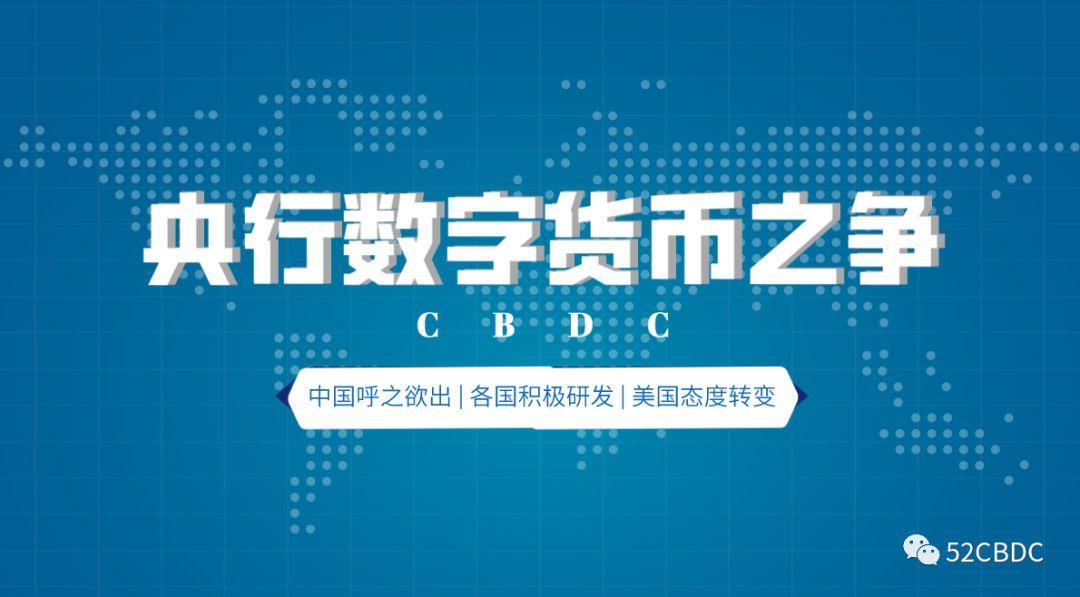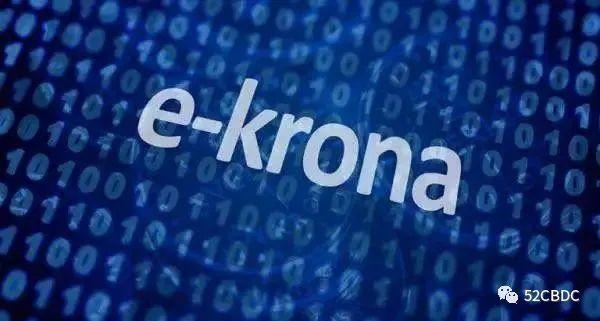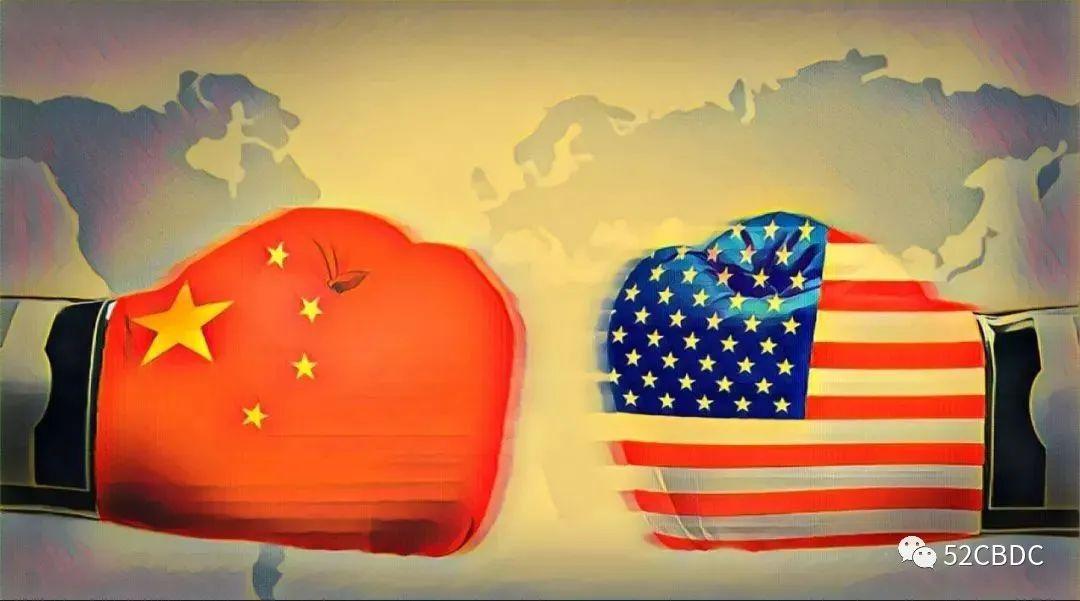Behind the quiet change in attitude towards the issuance of the CBDC, the United States values these more!

Entering 2020, the track competition of the central bank's digital currency CBDC is gradually entering a white-hot stage. The United States, which originally said no to the central bank's digital currency issuance, recently seems to be a bit reluctant to release its own digital currency! Because in addition to the Chinese central bank ’s digital currency DCEP, central banks around the world have either started to actively research and develop central bank digital currency-related technologies, or have begun pilot work.
On January 7, the Central Bank of the Bahamas reportedly began a pilot test of a digital version of the Bahamian dollar, which uses a QR code to allow users to use their smartphones for payments and transfers. On February 13, the Governor of the Central Bank of the Bahamas confirmed that the digital currency of the Bahamas Central Bank will be launched in the second half of 2020, and said that since December 2019, the first pilot of the "Sand Dollar" project in Exuma has been achieved Good progress. The central bank governor believes that the digital Bahamian dollar will help accelerate the provision of financial services needed to support the recovery of the business sector.

On January 23, the Governor of the Bank of Thailand stated in a news statement: "The Bank of Thailand has made good progress on a large-scale central bank digital currency project called Inthanon. Based on our experience, we need to use central bank digital currency. Benefits and their associated risks in different dimensions. "
On January 30, the Central Bank of Cambodia stated that it would launch the "Project Bakong" project, a central bank digital currency payment system. Chea Serey, director general of the National Bank of Cambodia, said that it has now received support from 11 of the country's 43 commercial banks.
- Analysis | The central bank is accelerating the development of legal digital currencies in 2020
- Is it a breakthrough high or one for 100,000 knives? Let's take a look at the halving of the currency price predicted by foreign big Vs
- May lose $ 3.1 billion in revenue in one year, Kraken's latest report thinks halving could hurt mining
On February 19, the Swedish central bank said it had begun testing the electronic krona, which brought the country one step closer to creating the world's first central bank digital currency. The Swedish central bank said that if the krona finally enters the market, it will be used to simulate daily banking operations, such as payments, deposits and withdrawals through digital wallets such as mobile applications. The Bank of Sweden said in a statement that the purpose of the project is to show the general public how to use eKronor, but no final decision has been made on whether to issue it or not. It will first simulate the use of eKrone in an "isolation test environment" . The trial will continue until February 2021.

Not long ago, Li Lihui, head of the Blockchain Working Group of the China Internet Finance Association and former governor of the Bank of China, said that under the current situation of epidemic prevention and control, digital currency issuance should be accelerated. "Yang Dong, director of the Center for Fintech and Blockchain Research at the Institute of Future Rule of Law at Renmin University of China, said," Institutions and individuals will be more inclined to use non-direct contact transaction media, including digital currencies, and this Tendencies can quickly develop a user stickiness. Digital currency will take this as an opportunity to accelerate its issuance and application. "
Faced with the popularity of central bank digital currencies in the world, it seems that the United States can no longer ignore the charm of central bank digital currencies. The reasons are as follows:
1. China's "threat theory"
First, compared to China, the United States, as the world's largest economy, has slowed down significantly since the global economic growth has slowed and trade frictions have escalated since 2019. According to the major international institutions such as the International Monetary Fund, the economic growth rate of the United States in 2020 is expected to range from 1.7% to 2.3%. Under the influence of the epidemic, China's economic growth rate in 2020 is still expected to be about 5%. Compared with the past high-speed growth, although it is a low speed, it is still higher than the global economic growth rate of about 3%.
As the world's second largest economy, China is a global leader in manufacturing and has maintained a relatively fast economic growth rate. In addition, China is more committed to economic transformation and building a technologically strong country, and implements it as an important long-term strategic goal of the country.

Not long ago, the results of a joint survey by Japan's Astamuse revealed that in the past decade, China has led the world in the number of patent applications for cutting-edge technology research and development fields such as blockchain, artificial intelligence, quantum computers, and drones, and even surpassed the United States. Regarding the admission and deployment of central bank digital currencies, China is ahead of many countries in the world, and with the further implementation of further pilot work, DCEP is ready to come out. Once the Central Bank of China ’s digital currency DCEP is successfully issued, it may help increase the international influence of the renminbi and weaken the dollar ’s influence.
Faced with such a situation, the United States has adopted a series of suppression policies, such as trade wars and technological containment. The director of the US National Trade Commission also made no secret that tariffs effectively protected the United States from advanced technologies in areas such as blockchain and prevented threats from competitors such as China. In addition, the White House plans to hold a cabinet meeting at the end of February to further discuss how to limit Chinese companies that are included in the "entity list" and how to compete with China for technological dominance.
2. Countries urgently need to break the containment of "US dollar hegemony"
After World War II, the US dollar was widely used as a reserve currency in countries outside the United States and eventually became an international currency. The proportion of US dollar-denominated settlement in world trade is much higher than that of other currencies. International trade not related to the United States also widely uses the US dollar-denominated settlement. The average dollar reserve of foreign exchange reserves in countries around the world accounts for more than 65%. The US dollar is used in foreign exchange transactions. The average weight of transactions is about 90%.
Under such circumstances, the United States still resolutely maintains a floating exchange rate system, that is, the exchange rate of one country ’s currency against another ’s currency in the foreign exchange market, which fluctuates freely based on supply and demand, without any government intervention. This makes the adjustment of the US monetary policy (dollar interest rate) affect the economic development of other countries, affect the US stock market, and indirectly affect the stock markets and even the economies of other countries. Changes in the exchange rate of the US dollar may trigger and deepen the crisis in emerging market economies. For example, the Mexican financial crisis in 1994, the Asian financial crisis in 1997, and the global financial crisis in 2008.

Compared with other countries, the United States can more easily cope with imbalances in the balance of payments with the use of the United States dollar. American companies have no risk of exchange rate changes in external payments, and the United States financial institutions have a large profit margin. This is what we call "US dollar hegemony", which means that the US dollar has brought many economic benefits to the United States in the process of performing world currency functions, but it may also cause various negative effects on the economies of other countries.
With the rise of the central bank's digital currency boom, many countries have actively launched their own digital currencies, on the one hand, in order to solve the real pain points and problems of their own countries in economic, financial, and monetary policies, and seek more development opportunities. By using the central bank's digital currency, this will help reduce the cost of service provision, increase transaction efficiency, and improve the overall level of inclusive finance.
On the other hand, it is because the digitization of the central bank's currency helps to optimize the central bank's currency payment function, improve the central bank's currency status and the effectiveness of monetary policy, and become a new monetary policy tool. This advantage can largely solve the problems of countries suffering from "US dollar hegemony", and effectively reduce the excessive reliance of weak sovereign currency countries on the US dollar, which will reduce the degree of dollarization and safeguard their sovereignty in the financial field.
In summary, we can learn that the reason why the United States has quietly changed its attitude towards the issuance of digital currency by central banks is to continue to maintain its international leadership in various fields and ensure that the position of the United States dollar is not threatened. Continue to circulate as world currency. However, the world is changing fast and technology is developing very fast. It is not a wise move to suppress and block the technology through parties. Instead of trying to pull back, it is better to encourage innovation and concentrate on the development of high-tech to promote the development of the world's digital currency Progress is the best policy.
Note: The pictures in the text are from the Internet, and they are invaded and deleted.
For reprint, please indicate the original article URL (52cbdc.com)
We will continue to update Blocking; if you have any questions or suggestions, please contact us!
Was this article helpful?
93 out of 132 found this helpful
Related articles
- Central bank digital currency (CBDC) international activity warms up, the central bank of Ukraine takes the lead
- Article of the Central Bank Institute of Digital Research clarifies the "right and wrong" of the blockchain: remove fakes and save the truth, you cannot do image engineering for the blockchain
- Cryptocurrency weekly gains list (2.16-2.22): Dragon Coins rose 109.41%, Cosmos rose 8.67%
- Introduction to Ethereum Technology: Synchronous Experiments in Quasi-Stateless
- "The Secret History of Bitcoin": Satoshi Nakamoto's secret behind leaving Bitcoin
- Vitalik Buterin: Ethereum PoS network goes live this year, with only a few validators in Phase 0
- Bitcoin's Guardian Angel: Conversation with 37-year-old billionaire founder of Coinbase






